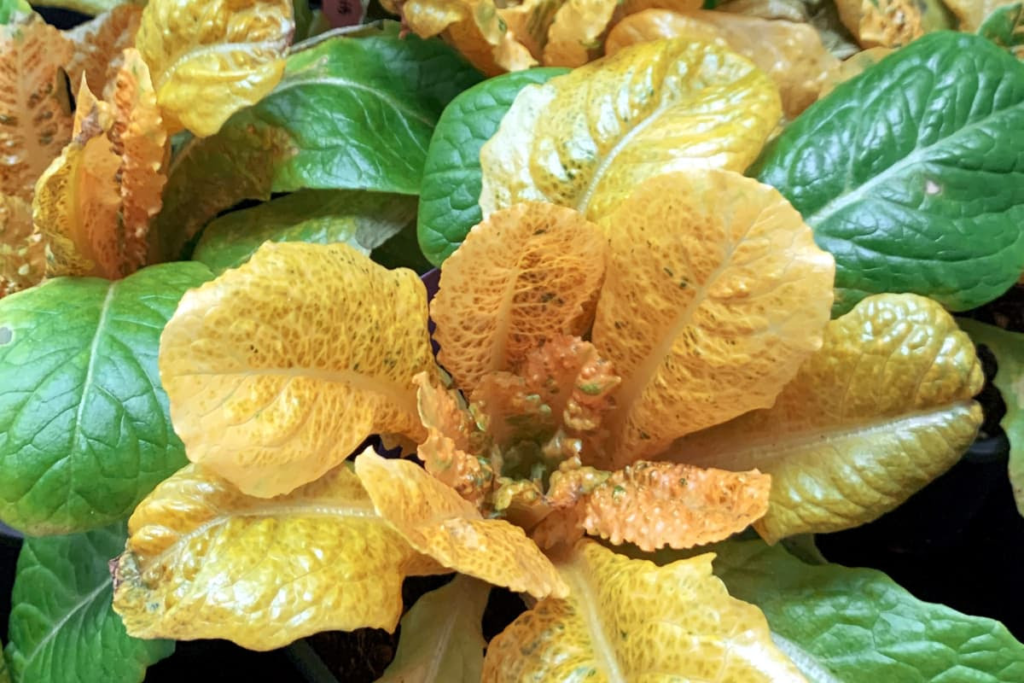Health & Wellbeing
By Michael Irving
September 16, 2024

“Golden Lettuce” is genetically engineered to have higher levels of the antioxidant beta-carotene, hence the yellow color IBMCP
Most of us don’t eat as much fruit and veggies as we know we should, but that goal might now be a bit more achievable. Scientists in Spain have engineered a new “Golden Lettuce” with 30 times more nutrients than the regular green stuff.
Lettuce isn’t the most exciting vegetable, but you’ll often find it padding out sandwiches, wraps, stews and other meals as a way to cram in extra nutrients (and cut restaurant costs). But maybe there’s a way to get more health benefits out of less lettuce.
A team from the Research Institute for Plant Molecular and Cellular Biology (IBMCP) has now genetically engineered the humble lettuce to boost its nutrients. Specifically, they increased the levels of an antioxidant called beta-carotene, which your body uses to make vitamin A. This is important for healthy vision, immune function, and cell growth, and is thought to be protective against Alzheimer’s, heart disease and some kinds of cancer.
Beta-carotene is usually found in high amounts in vegetables like carrots, pumpkin, and sweet potato. As you might guess, the common theme across those veggies is an orange color, and the new lettuce is no exception. Higher amounts of beta-carotene stains the leaves a striking yellow color, hence the nickname Golden Lettuce.
The levels of beta-carotene in the Golden Lettuce leaves were up to 30 times higher than those of regular lettuce. Not only that, but these antioxidants were more bioaccessible too, meaning our digestive systems can extract them more easily from our food.
Increasing those levels wasn’t completely straightforward, however. Beta-carotene is normally produced in a plant’s chloroplasts, the cellular structures that perform photosynthesis – but if you jam too much in there, it reduces the plant’s ability to gain energy from sunlight. So, the team found a way to move the antioxidant into different parts of the plant cells.
“Our work has successfully produced and accumulated beta-carotene in cellular compartments where it is not normally found by combining biotechnological techniques and treatments with high light intensity,” said Manual Rodríguez Concepción, lead author of the study.
This Golden Lettuce could soon join a genetically enhanced salad with more nutritious radishes and peas, and antioxidant-rich purple tomatoes and potatoes.
The research was published in the Plant Journal.
Source: IBMCP

Leave a Reply